Visual Culture and Religious Identity
Item set
- Title
- Visual Culture and Religious Identity
Items
-
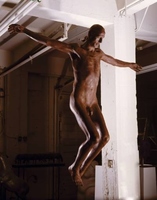
-
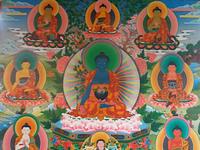 Reincarnation is the theory or belief that human beings are born into the physical body, not just once, but multiple times. In many religions and teachings, it includes being born into animal bodies, but in others, such as in theosophy, only in human forms. Belief in reincarnation is an ancient one. In the East, it is an integral part of Hindu philosophy and religion, and may be found in the Laws of Manu, Bhagavad Gita, the Upanisads, Puranasand even in the earliest of the Vedas, the Rig Veda. It is also called Samsara or the cycle of birth and rebirth from which every aspirant seeks release to attain liberation or Moksha. The cause of such return is trishna? Or thirst due to attachment to people and things. Buddhist belief, despite the fact that Buddhism denies the existence of an enduring Self orAtman. The reincarnating entity is composed of Skandhas or aggregates which are manifested from life to life.
Reincarnation is the theory or belief that human beings are born into the physical body, not just once, but multiple times. In many religions and teachings, it includes being born into animal bodies, but in others, such as in theosophy, only in human forms. Belief in reincarnation is an ancient one. In the East, it is an integral part of Hindu philosophy and religion, and may be found in the Laws of Manu, Bhagavad Gita, the Upanisads, Puranasand even in the earliest of the Vedas, the Rig Veda. It is also called Samsara or the cycle of birth and rebirth from which every aspirant seeks release to attain liberation or Moksha. The cause of such return is trishna? Or thirst due to attachment to people and things. Buddhist belief, despite the fact that Buddhism denies the existence of an enduring Self orAtman. The reincarnating entity is composed of Skandhas or aggregates which are manifested from life to life. -
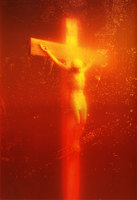
-
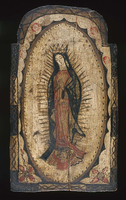 Painting of The Virgin of Guadalupe carved on wood
Painting of The Virgin of Guadalupe carved on wood -

-
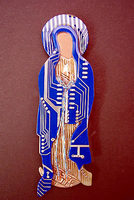 New Mexico artist, Marion C. Martinez creates museum quality pieces of art from recycled circuit boards combining her Hispanic heritage with the Native America surroundings of New Mexico.
New Mexico artist, Marion C. Martinez creates museum quality pieces of art from recycled circuit boards combining her Hispanic heritage with the Native America surroundings of New Mexico. -
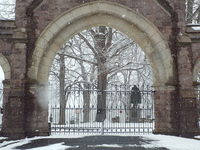
-
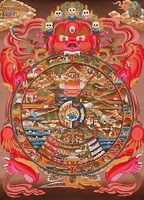 The doctrine of Buddhism discounts the existence of a soul or Atman. According to ancient Buddhist texts, there is no permanent self which moves from one life to another. Instead, it is the consciousness or the stream of consciousness which, upon the end of one life, joins another, much like a flame which is transferred from one candle to another. There is a certain relationship between the past and the present lives, neither are they identical, nor completely distinct. Such transmigration of consciousness is the effect of Karma, and this process of rebirth continues until the consciousness attains Nirvana, or complete independence of material wants and desires. Only then, can the “self” be free. The image here is the spectacular tankha of the wheel of suffering, illustrating samsara and rebirths in various worlds, a concept bound up not only in Buddhism, Hinduism, Janaism and Taoism—but given credibility (the concept of rebirth) by scientists.
The doctrine of Buddhism discounts the existence of a soul or Atman. According to ancient Buddhist texts, there is no permanent self which moves from one life to another. Instead, it is the consciousness or the stream of consciousness which, upon the end of one life, joins another, much like a flame which is transferred from one candle to another. There is a certain relationship between the past and the present lives, neither are they identical, nor completely distinct. Such transmigration of consciousness is the effect of Karma, and this process of rebirth continues until the consciousness attains Nirvana, or complete independence of material wants and desires. Only then, can the “self” be free. The image here is the spectacular tankha of the wheel of suffering, illustrating samsara and rebirths in various worlds, a concept bound up not only in Buddhism, Hinduism, Janaism and Taoism—but given credibility (the concept of rebirth) by scientists. -
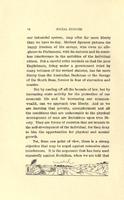
-

-
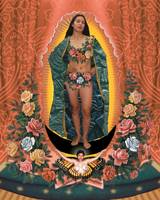 A figure who symbolizes the agony of Chicana and Mexican populaces in the setting of colonization, racism, and economic disenfranchisement.
A figure who symbolizes the agony of Chicana and Mexican populaces in the setting of colonization, racism, and economic disenfranchisement. -
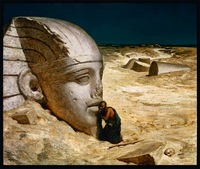 old man kneeling next to statue of half lion half man in sand
old man kneeling next to statue of half lion half man in sand -
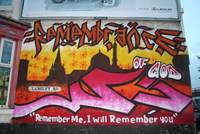 Mohammed Ali earned his pseudonym, Aerosol Arabic, by becoming one of the pioneering artists in Arabic influenced graffiti. For the past 10 years Mohammed Ali has been combining positive messages and his unique style of graffiti in an attempt to bridge the gap and connect people of all faiths from around the world. It is his belief that artists have a duty to make the world beautiful for those around them. Aerosol Arabic is recognized as one of the first graffiti artists to explore Arabic script influenced graffiti art (aerosolarabic.com). In more recent times, Mohammed has been creating artwork to be displayed in galleries, somewhat straying away from his roots as a graffiti artist making illegal pieces on the back walls of buildings in his hometown of Birmingham, England. However, occasionally the Aerosol Arabic will get permission to spray on a public wall. In 2008, he was granted permission to complete a piece on the outside of the Hamd House Nursery in Small Heath, and inner city neighborhood of Birmingham (Loat). The English lettering in the piece says, “Remembrance of God,” and “Remember me, I will remember you.” The mural also includes the Arabic word “dhikr,” which means remembrance. The background features the very recognizable Birmingham skyline. The purpose of the piece was to engage the largely Muslim student population while also bringing together members of all faiths. The skyline features St Martin's Church and Birmingham Central Mosque symbolizing the unity that this mural seeks to create (Loat). The Calligraffiti style and influence in this piece is evident. In addition to the Arabic script on the lower half of the painting, the word “Remembrance” is written with a clear Arabic calligraphy influence. The intention of this specific painting is to help unify the different faith communities in Birmingham while engaging young students in art. This universal idea of unity is prevalent in all of Mohammed’s work.
Mohammed Ali earned his pseudonym, Aerosol Arabic, by becoming one of the pioneering artists in Arabic influenced graffiti. For the past 10 years Mohammed Ali has been combining positive messages and his unique style of graffiti in an attempt to bridge the gap and connect people of all faiths from around the world. It is his belief that artists have a duty to make the world beautiful for those around them. Aerosol Arabic is recognized as one of the first graffiti artists to explore Arabic script influenced graffiti art (aerosolarabic.com). In more recent times, Mohammed has been creating artwork to be displayed in galleries, somewhat straying away from his roots as a graffiti artist making illegal pieces on the back walls of buildings in his hometown of Birmingham, England. However, occasionally the Aerosol Arabic will get permission to spray on a public wall. In 2008, he was granted permission to complete a piece on the outside of the Hamd House Nursery in Small Heath, and inner city neighborhood of Birmingham (Loat). The English lettering in the piece says, “Remembrance of God,” and “Remember me, I will remember you.” The mural also includes the Arabic word “dhikr,” which means remembrance. The background features the very recognizable Birmingham skyline. The purpose of the piece was to engage the largely Muslim student population while also bringing together members of all faiths. The skyline features St Martin's Church and Birmingham Central Mosque symbolizing the unity that this mural seeks to create (Loat). The Calligraffiti style and influence in this piece is evident. In addition to the Arabic script on the lower half of the painting, the word “Remembrance” is written with a clear Arabic calligraphy influence. The intention of this specific painting is to help unify the different faith communities in Birmingham while engaging young students in art. This universal idea of unity is prevalent in all of Mohammed’s work. -
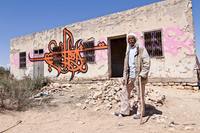 The sub-genre of street art known as “Calligraffiti” was first conceptualized for a New York art exhibit in 1984. Wild Style graffiti artist known for their graffiti art, which found its canvas in the subways and on the back alleys of through out the five boroughs of New York (Deitch: 1). One of the current most famous Calligraffiti artists is the French-Tunisian street artist, eL Seed. Born and raised in Paris, France, eL Seed became deeply immersed in the pop-culture of modern day France. With age, he became increasingly interested in his Tunisian heritage and quickly learned to write Arabic Calligraphy as he learned to master the Arabic language of his ancestors (Deitch: 2). eL Seed draws on his Tunisian ancestry as well as his French upbringing to inspire works of art that beautifully fuse modern popular culture with the stylistic Arabic calligraphy found in the Qur’an. In 2013, eL Seed began his project, Lost Walls as an attempt to rediscover his heritage while traveling through Tunisia transforming “lost walls” into beautiful works of Calligraffiti art. Through out his Lost Walls project eL Seed demonstrates the beauty of urban graffiti by placing it in a rural setting. His journey took him back to Temoula, a place where most of his family still lives, a place which eL Seed had not visited in many years (eL Seed: 142). This particular piece uses the now empty home of eL Seed’s later grandparent’s (eL Seed: 143). The graffiti piece draws inspiration from a poem written by one of eL Seed’s family members in homage to their land. eL Seed painted the first two verses of the poem on the façade of his grandparent’s house. It reads “Temoula, land of my Ancestors. There is no one like you,” (eL Seed: 146). In this work of art, eL Seed fuses the pop-culture graffiti style of Paris with the age-old beauty of Arabic calligraphy as well as the rural Tunisian culture of his ancestors. Through out his Lost Walls project eL Seed demonstrates the beauty of urban graffiti by placing it in a rural setting.
The sub-genre of street art known as “Calligraffiti” was first conceptualized for a New York art exhibit in 1984. Wild Style graffiti artist known for their graffiti art, which found its canvas in the subways and on the back alleys of through out the five boroughs of New York (Deitch: 1). One of the current most famous Calligraffiti artists is the French-Tunisian street artist, eL Seed. Born and raised in Paris, France, eL Seed became deeply immersed in the pop-culture of modern day France. With age, he became increasingly interested in his Tunisian heritage and quickly learned to write Arabic Calligraphy as he learned to master the Arabic language of his ancestors (Deitch: 2). eL Seed draws on his Tunisian ancestry as well as his French upbringing to inspire works of art that beautifully fuse modern popular culture with the stylistic Arabic calligraphy found in the Qur’an. In 2013, eL Seed began his project, Lost Walls as an attempt to rediscover his heritage while traveling through Tunisia transforming “lost walls” into beautiful works of Calligraffiti art. Through out his Lost Walls project eL Seed demonstrates the beauty of urban graffiti by placing it in a rural setting. His journey took him back to Temoula, a place where most of his family still lives, a place which eL Seed had not visited in many years (eL Seed: 142). This particular piece uses the now empty home of eL Seed’s later grandparent’s (eL Seed: 143). The graffiti piece draws inspiration from a poem written by one of eL Seed’s family members in homage to their land. eL Seed painted the first two verses of the poem on the façade of his grandparent’s house. It reads “Temoula, land of my Ancestors. There is no one like you,” (eL Seed: 146). In this work of art, eL Seed fuses the pop-culture graffiti style of Paris with the age-old beauty of Arabic calligraphy as well as the rural Tunisian culture of his ancestors. Through out his Lost Walls project eL Seed demonstrates the beauty of urban graffiti by placing it in a rural setting. -
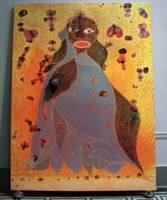
-
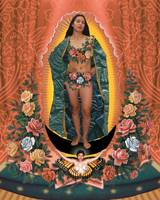
-

-
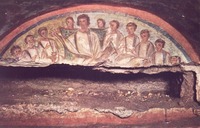 Today, little of early Christian art remains. The earliest pieces date back to the second century and many of these pieces were used to decorate the sarcophagi of deceased Christian worshippers. The frescoed painting above, Christ Among His Apostles, is such an image, created in either the late 3rd century or early 4th century, this depiction of Christ with his Apostles decorated the area above a sarcophagi in the Catacomb of Domitilla in Rome. From the picture, the sarcophagi looks to have been removed leaving only the painting remaining. On first glance, Christ Among His Apostles might seem like a depiction of The Last Supper, however, it is important to note that Christ Among His Apostles was painted well over a millennia before Leonardo da Vinci began work on his famous depiction of the supper. Many works depicting Christ and the Apostles after 1497 reference da Vinci’s work in some way as this painting has stuck with the world as a key Christian painting. However, Christ Among his Apostles has cultural significance because in addition to being one of the earliest Christian paintings, it gives us insight into how Christians viewed Christ and His Apostles before da Vinci’s influence. Similar to the last supper, Christ gains authority in this painting by being placed in the center of the image surrounded by his disciples. He can be seen reading from a scroll in elegant clothing while the disciples intently listen to his oration. The location of the painting, the Catacomb of Domitilla, is significant because it offers clues to the Christians living in Rome between the second century and the ninth centuries. Before the second century, Christians in Rome were buried among the Pagans on the outskirts of Rome. However by the fourth century the Church had enough land to begin having places of burial for Christians in the city. The Catacombs of Domitilla are an instance of this progress and were started when Flavia Domitilla, a Christian noblewoman who was a granddaughter to a past emperor. She gave land to the Church that would later be used for burial purposes. Christian saints were buried at this site and for seven centuries this Catacomb was a popular Christian burial site reaching seventeen kilometers of underground caves and four complete stories of catacombs. The tombs were lost from public knowledge for centuries until they were rediscovered by Antonio Bosio in 1593.
Today, little of early Christian art remains. The earliest pieces date back to the second century and many of these pieces were used to decorate the sarcophagi of deceased Christian worshippers. The frescoed painting above, Christ Among His Apostles, is such an image, created in either the late 3rd century or early 4th century, this depiction of Christ with his Apostles decorated the area above a sarcophagi in the Catacomb of Domitilla in Rome. From the picture, the sarcophagi looks to have been removed leaving only the painting remaining. On first glance, Christ Among His Apostles might seem like a depiction of The Last Supper, however, it is important to note that Christ Among His Apostles was painted well over a millennia before Leonardo da Vinci began work on his famous depiction of the supper. Many works depicting Christ and the Apostles after 1497 reference da Vinci’s work in some way as this painting has stuck with the world as a key Christian painting. However, Christ Among his Apostles has cultural significance because in addition to being one of the earliest Christian paintings, it gives us insight into how Christians viewed Christ and His Apostles before da Vinci’s influence. Similar to the last supper, Christ gains authority in this painting by being placed in the center of the image surrounded by his disciples. He can be seen reading from a scroll in elegant clothing while the disciples intently listen to his oration. The location of the painting, the Catacomb of Domitilla, is significant because it offers clues to the Christians living in Rome between the second century and the ninth centuries. Before the second century, Christians in Rome were buried among the Pagans on the outskirts of Rome. However by the fourth century the Church had enough land to begin having places of burial for Christians in the city. The Catacombs of Domitilla are an instance of this progress and were started when Flavia Domitilla, a Christian noblewoman who was a granddaughter to a past emperor. She gave land to the Church that would later be used for burial purposes. Christian saints were buried at this site and for seven centuries this Catacomb was a popular Christian burial site reaching seventeen kilometers of underground caves and four complete stories of catacombs. The tombs were lost from public knowledge for centuries until they were rediscovered by Antonio Bosio in 1593. -

-

-
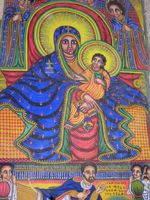
-

-

-

-

